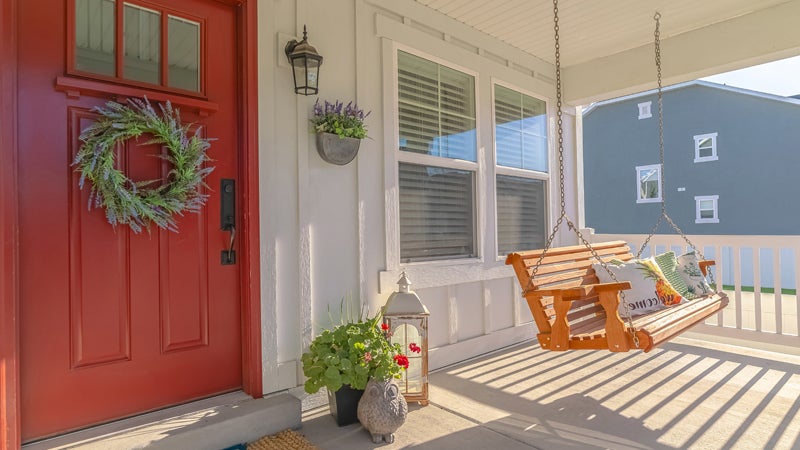It’s finally Autumn! Hooray! With the changing of each season we recommend a few tips to help maintain your home. But as we all know this summer in Washington state was a little different this year. The smoke from the summer forest fires have finally dissipated, but while gone, there are now additional home maintenance steps we recommend as we head into the new season.
It’s important to note that ash is made up of different sized particles and ash deposited on surfaces, indoors and outdoors, and can become airborne when cleaned up. Please use extreme caution when clean anything with ash on it. For additional indoor air quality tips and clean up safety gear recommendations, we advise that you visit the Environmental Protection Agency’s website here.
Additional Home Maintenance Steps To Take Now That The Summer Forest Fire Smoke Has Cleared:
- The EPA’s Recommended Actions To Take From To Protect Yourself From Ash When Cleaning:
- Clothing: Wear gloves, long-sleeved shirts, long pants, shoes, and socks to avoid skin contact. Goggles are also a good idea contact with wet ash can cause chemical burns or skin irritation. Change your shoes and clothing before you leave the cleanup site to avoid tracking ash offsite, into your car, or other places.
- Protecting your lungs: Wear a tight-fitting respirator that filters ash particles from the air you breathe to help protect your lungs. Select a respirator that has been tested and approved by NIOSH and has the words “NIOSH” and either “N95” or “P100” printed on it. These have two straps and are available online, and at many hardware stores and pharmacies. Buy respirators in a size that can be tightened over your mouth and nose with a snug seal to your face. Surgical masks and one-strap dust masks will not protect your lungs. They are not designed to seal tightly to the face. If you have heart or lung disease talk to your doctor before using a respirator or working around ash.
- Cleanup Steps:
- Cleanup: Avoid stirring up or sifting through ash as much as you can. Avoid actions that kick ash particles up into the air, such as dry sweeping. Beforesweepingindoor and outdoor hard surfaces, mist them with water to keep the dust down. Follow with wet mopping. Use a damp cloth or wet mop on lightly dusted areas. When you wet down ash, use as little water as you can.
- Vacuum: Use a high-efficiency particulate air (HEPA)-type vacuum to clean dusty surfaces. Don’t use a typical household vacuum or a shop vacuum. They will send the collected dust or ash out into the air. Don’t leaf blowers or do anything else that will put ash into the air.
- Food and Water: Wash any home-grown fruits or vegetables from trees or gardens where ash has fallen. Avoid bringing food or eating at the affected site, unless you keep the food in a sealed container. Wash your hands well before eating. Check with your drinking water provider to be sure your water is safe to drink.
- Disposal: Collected ash may be disposed of in the regular trash. Ash should be stored in plastic bags or other containers to prevent it from being stirred up. If you suspect hazardous waste, including asbestos, is present, contact your local hazardous waste authorities regarding appropriate disposal. Avoid washing ash into storm drains.
- Extra Steps To Take For Your Home This Year:
- Check and change out your furnace air filters asap.
- Change any humidifier filters out.
- Clean all outdoor furniture before putting it away for the season.
- Have your fireplace and flues inspected and cleaned before starting a fire.
- For a full list of recommended clean up tips from the EPA’s website please see their fact guide here.
Standard Recommended Home Maintenance Recommendations For Fall:
- Purchase necessary snow shovels, salt, and sand. (We know it might not snow that often in the Seattle area, but it’s best to be prepared just in case!)
- Turn off any exterior taps.
- Clear window wells and eaves troughs.
- Winterize all plants and shrubs.
- Winterize hose-bibs.
- Weatherproof windows and doors.
- Inspect roof openings, woodstoves, and weatherproof as needed.
- Have your fireplace, any woodstoves you may have, and flues inspected and cleaned before starting a fire. (Yes this to-do is on both lists on this blog because it’s very important that you have your fireplace inspected)
- Clean/change furnace and humidifier filters.
- Check/test fire extinguishers.
- Check your supply of electrical fuses, breakers, emergency candles, and flashlights.
- Fertilize your lawn and garden.
- Prune trees and shrubs away from the house.
- Plant your spring bulbs.
- Put out your hummingbird and birdseed feeders.




